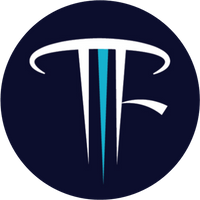Tesla Downsizing
March 7th, 2019If you have not been paying attention to Elon Musk in the last few years, then you might not know that he has been saying some pretty obvious things with regards to using as few humans as possible to accomplish the task at hand.
The original intention was to make the assembly line completely automated. But ramping up production was too difficult as all of the required automation would take a very long time. Elon eventually recognised this and claimed it as a mistake.
Recognising the mistake did not however change the goal. He brought humans in where it made the most sense. Connecting dangling wires together etc. etc.
This definitely throws off the revenue model at Tesla. Where automation can be one-off expenses and multiplexed, humans require recurring pay.
If you get rid of recurring human pay, you can put that same money towards mechanical growth.
Now just because humans were deemed necessary on the assembly line, doesn't mean the goal to replace those humans with machines still isn't there. It just needs some time.
With regards to sales however, the ability to buy this product without humans would also be explored for feasibility. In order to accomplish a human paying for a car with the least amount of human intervention, you would need many pieces to solve that puzzle. But humans greeting customers and taking them out for test drives, is recurring revenue paid to humans which was preventing funds from being diverted to multiplexing vehicle manufacturing.
While it isn't uncommon to have jobs be deemed obsolete, due to automation, Tesla employees are much more vulnerable as it is clearly the goal to automate as much as possible.
Where can it go from here? Currently a new owner can go onto Tesla's website and place an order. From there, a series of email instructions can guide the user through necessary steps to obtain insurance and secure financing.
Therefore the first two things that need to be automated are seamless financing and insurance. Tesla will be able to do this with partnerships and API's. This can be completely seamless.
The next thing is to purchase and install a wall charger if possible. The purchase of the wall charger can be done through Tesla's store. The installation will be difficult to automate. But again, after it is done once, it doesn't need to be done again (if you buy a replacement Tesla). So it isn't a full-fledged recurring problem.
I am guessing that in the future the delivery address will change from regionally static to fully dynamic. I expect all wew owners will eventually be given the option have their cars delivered to a specific address or GPS location.
As cars come out of the factory, they can drive themselves to a parking spot. When that car matches a user order, and a delivery location is established, the logistics algorithm will drive the vehicle onto a delivery truck.
The delivery trucks themselves could be autonomous. However they will need people to plug them in. It might make sense to have employees babysit superchargers to plugin vehicles that arrive so that the vehicles can be fuelled and move on until such time that the vehicles can interface with chargers automatically.
The delivery trucks arrive at hubs where the cars unload themselves and drive onto a flatbed trailer. The flatbed which is driven by an autonomous Tesla pickup truck then navigates to a user's destination.
Upon arrival the user is notified via the phone app and can come out and take delivery.
Likely the car being detailed would be an optional add-on and new owners would be expected to take delivery from specific Telsa approved Detailers.
So there you have it. Aside from the electrician and an optional Detailer, and perhaps the guy plugging in trucks to charging stations you have minimal human intervention in the process.
Will it be like this tomorrow? No. It might be 10 years or even longer. And what advantage does this give Tesla? Cash Money! At first, the money will be applied to growth. New factories, new product lines. But once one of everything is built, and production stabilises with demand the only thing left to do with the money is reduce margins. If Tesla can maintain or even improve quality of their products and focus on driving down costs, it will be a massive competitive advantage in the long run.
I am TSLA long.
UPDATE March 13, 2019
Looks like Tesla flip-flopped on decision to close most stores. Making this change in phases does make good sense. It doesn't change the end goal.
Posted In:
ABOUT THE AUTHOR:Software Developer always striving to be better. Learn from others' mistakes, learn by doing, fail fast, maximize productivity, and really think hard about good defaults. Computer developers have the power to add an entire infinite dimension with a single Int (or maybe BigInt). The least we can do with that power is be creative.
 The Limiting Factor
The Limiting Factor Whole Mars Catalog
Whole Mars Catalog